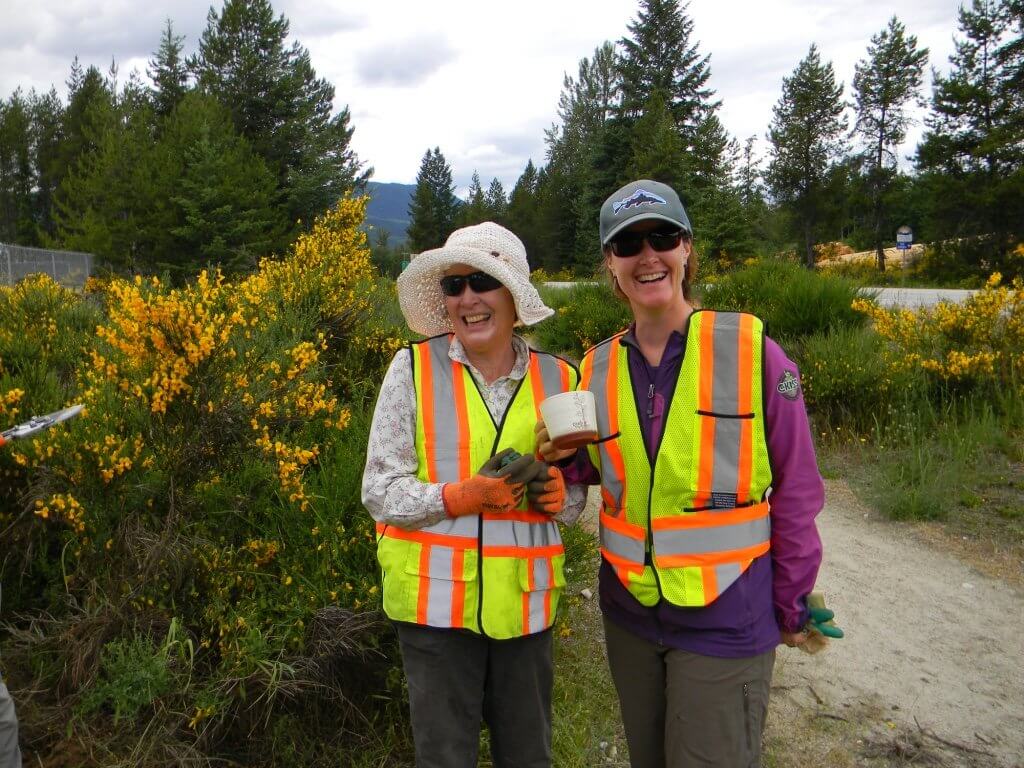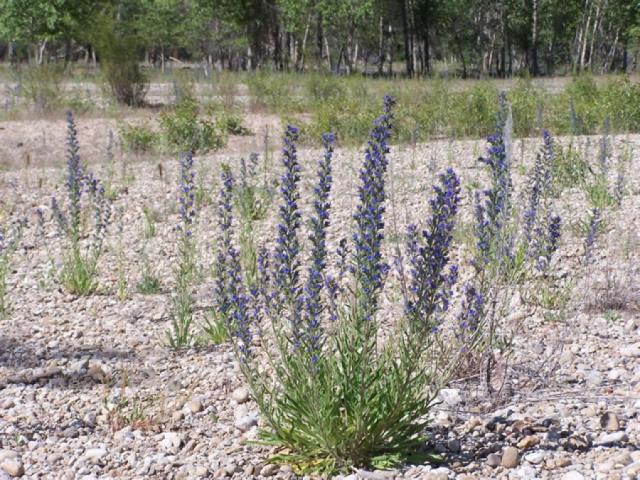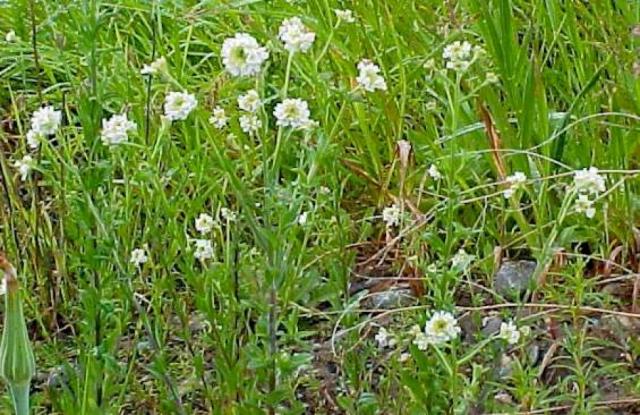On June 10 CKISS organized a community weed pull in Nakusp BC. During the event CKISS acknowledged the recipient of the 2018 Volunteer Award, Ruth Fraser. This passionate weed puller is an asset to the Nakusp that has been infested with scotch broom, baby’s breath and blue weed. Ruth can be spotted through out the community with her high vis vest on,her signature sun hat and hand tools tackling a variety of infested sites in the town. We thank her for her hard work and dedication!

High Priority Species in the Nakusp Region

Blueweed Description
- Native to Europe.
- Biennial or short lived perennial.
- Blue flowers on upper part of stalk.
- Small stiff hairs on stem and leaves.
- Likes dry, rocky and/or shallow soils.
- Found in the Creston, Nakusp, Kaslo, Whatshan and Powder Creek area.
Consequences of invasion
- Invades rangelands and pastures, impacting livestock.
- Contain pyrrolizidine alkaloids, which can be toxic to horses and cattle when ingested.
- Seeds can contaminate clover and other crop seeds.
- Known host for several plant diseases spread by aphids including alfalfa mosaic virus and tobacco mosaic virus.
- Seeds viable for 36 months.

Baby’s Breath Description
- Herbaceous perennial
- Delicate blossoms of white and sometimes pink, with bushy stalks
- Opposite branching pattern, can grow up to 1m tall
- Establishes in well-drained soils, like sand or gravel
Consequences of invasion
- When mixed with hay, the protein value of the crop diminishes, therefore less valuable to livestock or wildlife.
- Outcompetes native and introduced grasses

Hoary alyssum Description
- Native to east-central Europe and western Asia.
- Annual to short-lived perennial.
- In the Mustard family.
- Has white flowers on multiple stalks.
- Grows well on sandy and/or gravelly soils and dry disturbed open sites.
- Reproduces by seed.
- Found throughout the CKISS region.
Consequences of invasion
- Invades rangelands and pastures, impacting livestock.
- Infestations can reduce hay quality and value.
- Toxic to horses; causes depression, swelling of lower legs, fever, diarrhea, and potentially death.

Scotch broom Description
- Yellow pea-like flower sometime with a red marking in the middle
- Grows 1m to 3m tall and has a green woody stem
- Tight against the stem are seedpods that are initially green and turn brown to black as they mature
Consequences of invasion
- Fire hazard
- Obstructs driver views on roadsides
- Takes over rangelands and plantations resulting in decreased crop yields and plantation failures

